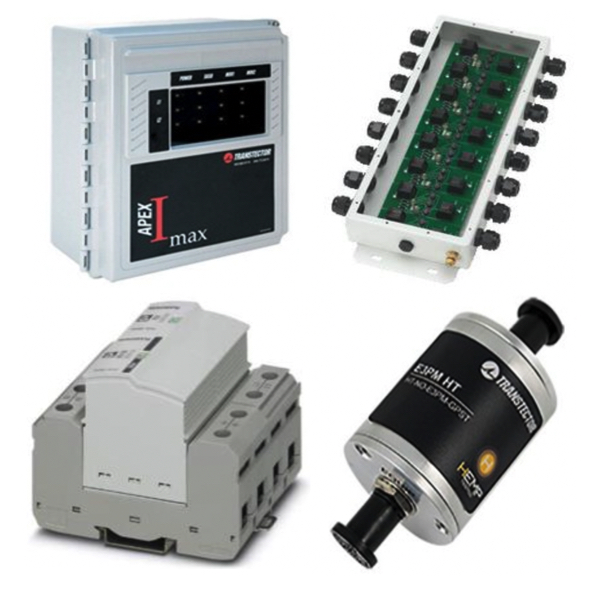Surge Protection & Filters

Power surges occur when there is a sudden increase of voltage sent through a power system from an internal or external force. Such forces can be caused by lightning strikes, electrical overload, faulty wiring or utility switching. Surge protective devices provide a line of defense against power surges preventing irreparable damage to equipment and costly downtime.
AC surge protectors, also known as surge protection devices (SPDs) or transient voltage surge suppressors (TVSSs), are electrical devices that are inserted into the alternating current (AC) line to protect electrical, data communication and telecommunication equipment from damage caused by lightning and electrical transient surges. The AC surge protector short-circuits to electrical ground any transient voltage that goes above a certain threshold while allowing the flow of normal current to remain unaffected.
DC surge protectors are devices that are designed specifically for direct current lines. Unlike AC, that oscillates back and forth, DC remains at a constant voltage. This makes arcing a bigger hazard and the surge protection device must be designed with additional arc extinguishing measures.
More Information about Surge Protection & Filters
RF surge protectors are devices that are commonly used for antenna and radio installations and are designed to protect against power surges caused by lightning while still allowing the desired frequency to pass through. Some RF surge protectors also protect radios and other equipment from electromagnetic pulse (EMP) or high-altitude EMP (HEMP) related electrical changes.
FAQs
Can an uninterruptible power supply protect electronic devices from surge voltages?
Yes, an uninterruptible power supply (UPS) can protect electronic devices from surge voltages. UPS units typically have built-in surge protection, which can help prevent damage from these types of voltage spikes.
Surge Protection Basics
What causes power surges?
Lightning strikes are one of the most common causes of power surges and can affect an electrical system even if the strike occurs miles from the electrical source. Conductors buried underground can still transmit the energy of the strike to electrical equipment located indoors. Lightning rods and other grounding equipment can help, but do not completely eliminate the risk.
Switching equipment such as motors, transformers and other equipment can cause a sudden change in load, power loss and disconnection of circuit breakers. This sudden switching can cause overvoltage, leading to power surges. The closer the switching occurs to the electrical system, the more threat it will pose to the equipment.
Operations that a user performs can cause surges, but typically have a very short duration. Examples include: starting a motor, opening circuit breakers and welding equipment.
What is the best way to stop power surges?
By using transient surge suppressors, the problems associated with most transient surges can be eliminated. They provide protection by either blocking or shorting the voltage over its operating limit to ground, protecting circuits downstream of the suppressor. The best way to approach this is in tiers.
Tier 1 – The protection is closest to the incoming power source. This is the main protection for a particular location.
Tier 2 – This is in an area that will be protecting multiple devices that have branch protection. An electrical control panel would be an example of this type of application.
Tier 3 – Individual protection. In the case of an industrial control panel, this would be protection for each instrument entering the panel.

